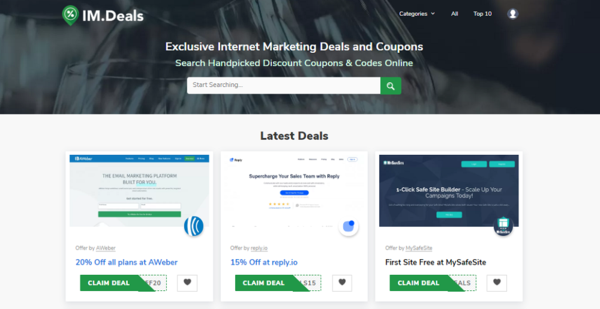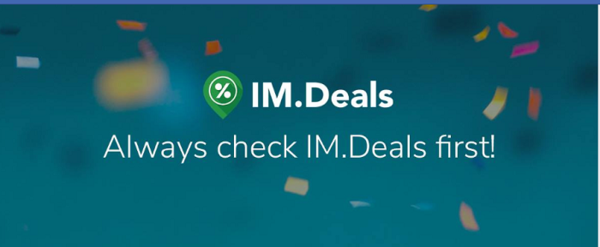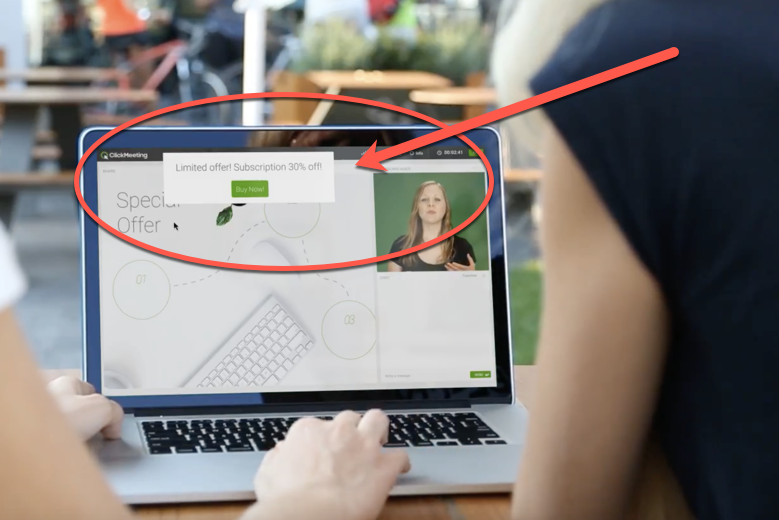Digital Adoption – What You Need to Know and Where We Are Headed
Digital adoption is probably a term you’ve been hearing a lot about lately, but really aren’t sure what it is.
As the business world and pretty much everything around us continues to evolve in some digital technological way, it seems like the world and everything in it is talking with each other more and more. Whether it’s home devices connecting with personal devices, or enterprise businesses getting their employees and networking teams all on the same page with new software and task, it’s part of the digital adoption process.
In short, as explained by WalkMe, “digital adoption is defined as achieving a state in which digital tools are being used as intended, and to the fullest extent.”
However, as much as you might think you have a solid sequence of digital adoption in your business or everyday life, it’s likely not up to the standards of what the phrase really means. The truth is, unless people can actually use the technology they have in place (and as it was originally intended) with its full range of capabilities, it would be impossible to fully integrate it into an effective workflow.

At the same time, digital tools have a higher barrier to their productivity and innovation, which makes it tough to have a seamless digital transformation progress.
With all of this in mind, today we are going to highlight not only the importance of achieving digital adoption within your business, but also how it’s going to continue to play a major role in the coming months and years for enterprises.
Technological Advancement vs. Digital Adoption
When looking at how technological advancements have changed the way businesses and people connect in the world today, it seems to be changing daily. Not just through the means and power of the internet, but instead how it’s changing every single aspect of life and business as we know it.
Looking at some of the most popular and game changing technological trends anticipated through 2019, we’d be focusing on:
- Artificial Intelligence
- Machine Learning
- Chatbots
- Robotic Process Automation
- The Internet of Things
The common theme with each of these advancements, is that they are part of a useful tool, software or system that allows for faster data processing, connectivity, and getting work done.
However, without digital adoption in place, these game changing aspects could simply be looked at as just new tools and solutions that aren’t being used to their full potential.
A perfect example of this can be seen with chatbots, which are already a huge focus for many brands and businesses in the world today. Vistage has a great resource on many of the top technological advancements that are changing the business world in 2019, and had the following stats to share on chatbot usage as well.
- 85 percent of transactions will be possible without the use of a human being by 2020.
- 69 percent of consumers cite speed as their criteria in assessing satisfaction in a customer service transaction.
They also had the following nugget on The Internet of Things as well:
IoT devices will be in 300 million homes worldwide by 2020. About 85 percent of companies are expected to imbed IoT in their solutions to drive efficiencies and personalize experiences. Companies are starting to unlock the value of devices and data, from grocery lists to television viewing. Moving into 2019-2020, the emphasis will shift from selling 1.0 devices toward examining data in real time.
But again, as we reflect to digital adoption, without the necessary solution in place, these are all just new features and tools to play with. Time and time again we are seeing billions of dollars being spent on flashy new tools and devices for enterprise resource planning, only to see numerous failures and lowered business projections afterwards. (below image source)

Often, an inefficient implementation process acts as the main reason why business fail to adopt new technological tools. For digital adoption to fully take place, it’s not about picking the right system or platform, it’s also about making sure everyone is on the same page and willing to make the transition.
Where the Demand and Desire for Digital Adoption is Lacking
Just like anything in life, one needs to walk through a process and learn how to do something before becoming an expert at it.
Take mobile devices for instance. You could use them to send text messages and call the contacts on your phone, but you could also use the same device to boost productivity in countless tasks you’re doing on a day-to-day basis.
The same is true for businesses of all sizes. Whether it’s a small mom and pop or a Fortune 500 company, they likely are using (and paying) for a wide range of tools and solutions to power their business, but are only using them for a mere fraction of what they can actually accomplish. The same advanced technological abilities that are neglected do not only act as an oversight, but a nuisance as well.
This means there is a huge demand for digital adoption across both areas, but most people and business owners aren’t willing to put in the time, work, and effort to see what’s possible.
This is where automation and a digital adoption platform comes into play.
In a recent article on this exact topic, WalkMe has the following to share:
A WalkMe study of 117 customers and more than 117,240 end users of HCM and CRM systems found that the ideal length of a business process is under 70 seconds. It also found that when employees don’t need to complete more than five steps, there is a 70% success rate by users.
On the other hand, if employees need to complete more than five steps, it’s likely they will drop off before finishing the process. The implications range from diminished business performance to employee frustration and diminished morale.
Using business process automation helps to reduce the length of business processes and delivers a range of other benefits from increased productivity to transparency.
By this we can see that there is a huge demand and need for digital adoption in many forms, but the process needs to be quick and effective in order for the end user to experience the implementation process successfully.
Ultimately, the lack of digital adoption that we are seeing in the industry today is as a result of these complications and the drop off from businesses, employees, and IT staff who don’t oversee the projects and tasks through to the end. However, when the time and effort is put into place to make sure digital adoption takes place, the result is magic.
The Future of Digital Adoption and Where We Are Headed
There is no doubt about it — digital adoption is here, and the individuals and businesses that take advantage of the huge opportunity in place are going to find themselves way ahead of the competition in nearly all facets. This is especially true for enterprise level businesses that would see exponential growth and scalability across their network of employees, co-workers and data driven results and operations.
However, keep in mind that it’s not just about businesses, but also how devices and technology is used in the world today. Just like how mobile device usage was mentioned earlier, digital adoption is something that should be focused on across all platforms and means in life. As a business owner or tech specialist, this is something that should always stick within your train of thought — as it’s not just about the task at hand, but how users (employees) can work with such solutions and advancements as well.
Now is the best time to start focusing on digital adoption in both life and business, and after reading through this quick resource guide and refresher you should have more focus and motivation than ever before.
Digital adoption is probably a term you’ve been hearing a lot about lately, but really aren’t sure what it is.
As the business world and pretty much everything around us continues to evolve in some digital technological way, it seems like the world and everything in it is talking with each other more and more. Whether it’s home devices connecting with personal devices, or enterprise businesses getting their employees and networking teams all on the same page with new software and task, it’s part of the digital adoption process.
In short, as explained by WalkMe, “digital adoption is defined as achieving a state in which digital tools are being used as intended, and to the fullest extent.”

However, as much as you might think you have a solid sequence of digital adoption in your business or everyday life, it’s likely not up to the standards of what the phrase really means. The truth is, unless people can actually use the technology they have in place (and as it was originally intended) with it’s full range of capabilities, it would be impossible to fully integrate it into an effective workflow.
At the same time, digital tools have a higher barrier to their productivity and innovation, which makes it tough to have a seamless digital transformation progress.
With all of this in mind, today we are going to highlight not only the importance of achieving digital adoption within your business, but also how it’s going to continue to play a major role in the coming months and years for enterprises.
Technological Advancement vs. Digital Adoption
When looking at how technological advancements have changed the way businesses and people connect in the world today, it seems to be changing daily. Not just through the means and power of the internet, but instead how it’s changing every single aspect of life and business as we know it.
Looking at some of the most popular and game changing technological trends anticipated through 2019, we’d be focusing on:
- Artificial Intelligence
- Machine Learning
- Chatbots
- Robotic Process Automation
- The Internet of Things
The common theme with each of these advancements, is that they are part of a useful tool, software or system that allows for faster data processing, connectivity, and getting work done.
However, without digital adoption in place, these five game changing aspects could simply be looked at as just new tools and solutions that aren’t being used to their full potential.
A perfect example of this can be seen with chatbots, which are already a huge focus for many brands and businesses in the world today. Vistage has a great resource on many of the top technological advancements that are changing the business world in 2019, and had the following stats to share on chatbot usage as well.
- 85 percent of transactions will be possible without the use of a human being by 2020.
- 69 percent of consumers cite speed as their criteria in assessing satisfaction in a customer service transaction.
They also had the following nugget on The Internet of Things as well:
IoT devices will be in 300 million homes worldwide by 2020. About 85 percent of companies are expected to imbed IoT in their solutions to drive efficiencies and personalize experiences. Companies are starting to unlock the value of devices and data, from grocery lists to television viewing. Moving into 2019-2020, the emphasis will shift from selling 1.0 devices toward examining data in real time.
But again, as we reflect back to digital adoption, without the necessary solution in place, these are all just new features and tools to play with. Time and time again we are seeing billions of dollars being spent on flashy new tools and devices for enterprise resource planning, only to see numerous failures and lowered business projections afterwards. The end result here is better technology and a goal for improved productivity and performance, but ultimately such projects haven’t been completely followed through.
More often than not, the main cause of failure on the inability to adopt such methods and strategies into the business, was the actual implementation process. For digital adoption to fully take place, it’s not about picking the right system or platform, it’s also about making sure everyone is on the same page and willing to make the transition.
A three step plan for initiating this process can be broken down as simple as thing.
- Tip #1: Begin the project with user involvement
- Tip #2: Define project roles and ownership
- Tip #3: Embed “micro learning” into the user experience
With all of these components and metrics in mind, it’s important to try and create an effective digital strategy that can incorporate each of these methods and solutions into your business.
And even if you are able to accomplish that feat, your business needs to not only understand how to use such solutions to their fullest extent, but to also commit to learning how to execute and scale out such solutions over time.
Where The Demand and Desire for Digital Adoption is Lacking
Just like anything in life, one needs to walk through a process and learn how to do something before becoming an expert at it. The same holds true with digital adoption in both life and business.
A perfect example of this can be seen with mobile devices. Nearly everyone has a super computer in the palm of their hand, but most people are just using them to send text messages to each other, make a few phone calls and play a few apps. With such technology and power in your hands, imagine what is really possible.
The same is true for businesses of all sizes. Whether it’s a small mom and pop or a Fortune 500 company, they likely are using (and paying) for a wide range of tools and solutions to power their business, but are only using them for a mere fraction of what they can actually accomplish.
This means there is a huge demand for digital adoption across both areas, but the majority of people and business owners are willing to put in the time, work, and effort to see what’s possible.
This is where automation and a digital adoption system comes into play.
In a recent article on this exact topic, WalkMe has the following to share:
A WalkMe study of 117 customers and more than 117,240 end users of HCM and CRM systems found that the ideal length of a business process is under 70 seconds. It also found that when employees don’t need to complete more than five steps, there is a 70% success rate by users.
On the other hand, if employees need to complete more than five steps, it’s likely they will drop off before finishing the process. The implications range from diminished business performance to employee frustration and diminished morale.
Using business process automation helps to reduce the length of business processes and delivers a range of other benefits from increased productivity to transparency.
By this we can see that there is a huge demand and need for digital adoption in many forms, but the process needs to be quick and effective in order for the end user to implement such methods and find success.
Ultimately, the lack of digital adoption that we are seeing in the industry today, is as a result of these complications and the drop off from businesses, employees, and IT staff who don’t see the projects and tasks through to the end. However, when the time and effort is put into place to make sure such adoption can take place, the end result is magic.

The Future of Digital Adoption and Where We Are Headed
There is no doubt about it — digital adoption is here, and the individuals and businesses that take advantage of the huge opportunity in place are going to find themselves way ahead of the competition in nearly all facets. This is especially true for enterprise level businesses that would see exponential growth and scalability across their network of employees, co-workers and data driven results and operations.
However, keep in mind that it’s not just about businesses, but also how devices and technology is used in the world today. Just like how mobile device usage was mentioned earlier, digital adoption is something that should be focused on across all platforms and means in life. As a business owner or tech specialist, this is something that should stick within your train of thought at all times — as it’s not just about the task at hand, but how users (employees) can work with such solutions and advancements as well.
Right now is the best time to start focusing on digital adoption in both life and business, and after reading through this quick resource guide and refresher you should have more focus and motivation than ever before.
The post Digital Adoption – What You Need to Know and Where We Are Headed appeared first on Zac Johnson.
Labels: Zac Johnson

























